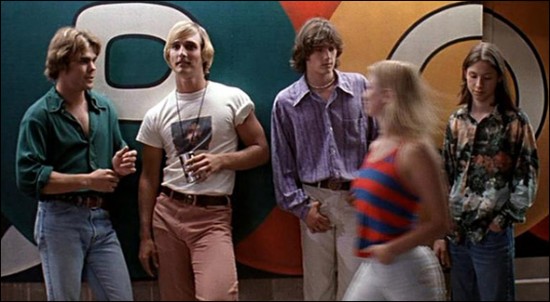Dazed and Confused

A movie that unfolds in a single day — whether Do the Right Thing or Dr. Strangelove — is often an example of synecdoche; it’s an effort to portray the tragedy and comedy of a sociocultural phenomenon (e.g., The Nuclear Arms Race, Being Young and Black) in snapshot form.
However, a movie that unfolds in a single night — The Warriors, say, or Night of the Living Dead — is almost always an example not of synecdoche but metonymy. Such a movie’s contents represent an elusive phenomenon with which they may be closely associated, but of whose whole they form no part.
So single-night movies aren’t snapshots, they’re moonlit summoning rituals; I’ve found that such conjurations work best when you watch them with the sound turned off.
This is ironic in the case of a Richard Linklater movie, because there isn’t another writer-director alive — not even Wes Anderson — who so enjoys letting his characters jawbone. Mute Dazed and Confused, though, and you’ll discover that it’s not “about” Youth, The Seventies, or Getting High; instead, it’s an OGXer’s vision of a non-totalizing social totality. The restless, almost protean blocking via which we catch glimpses of Mitch Kramer (Wiley Wiggins) and other Youth Getting High in the Seventies is the means by which Linklater indirectly evokes an anarchic utopia the likes of which has never yet existed: one in which no square peg is ever forced into a round hole.

